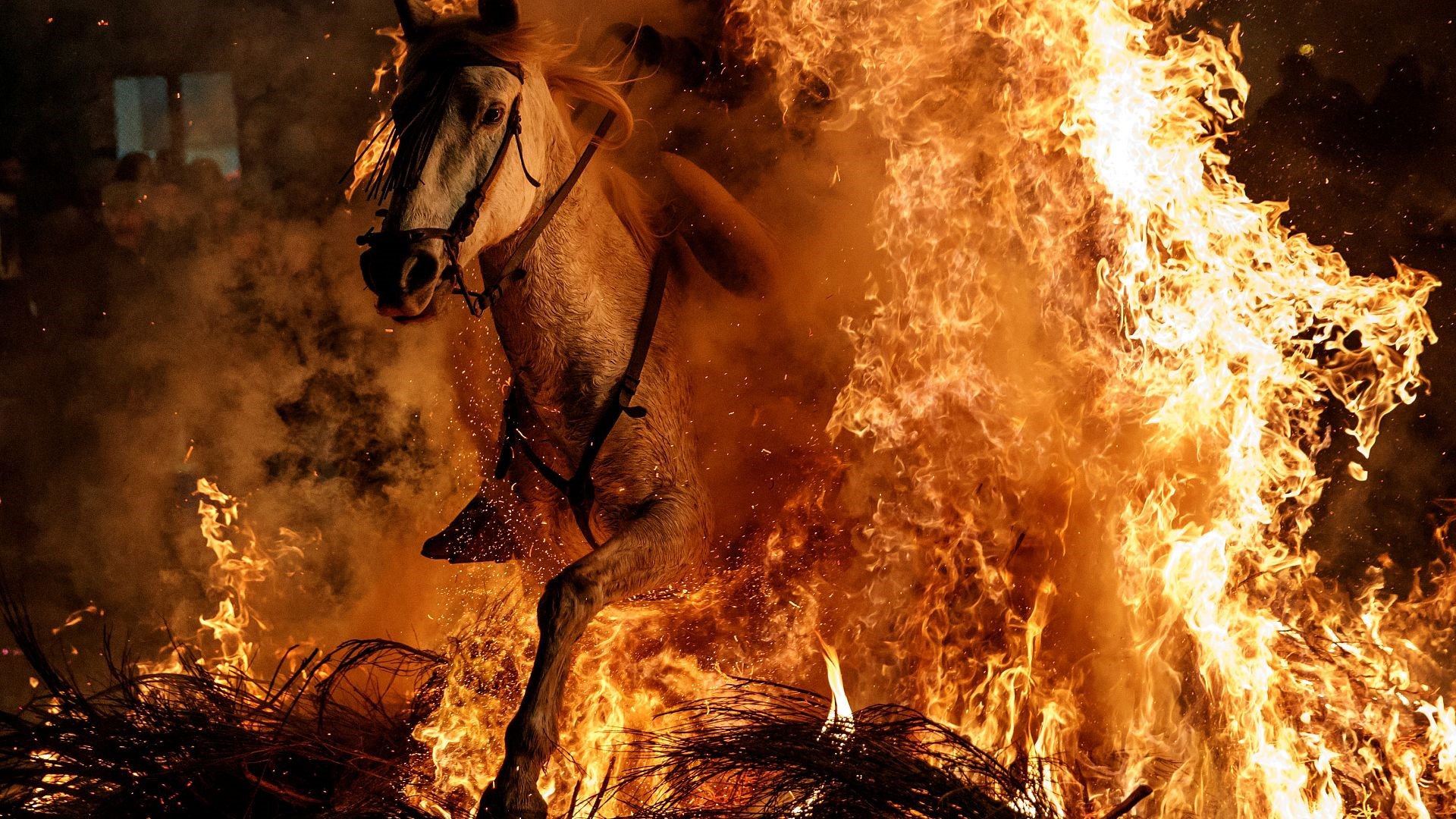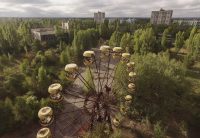Strangest Festivals in Spain
There are many diverse festivals and events around the world, and Spain boasts the largest and most bizarre of these festivals. Spain is renowned for its unique and unusual events and festivals that reflect the diversity of its culture and traditions. Due to their great fame, these festivals attract many tourists from all over the world, making Spain a gathering hub for hundreds of spectators who come to enjoy these exceptional festivals. Some of the most famous ones include:
Baby Jumping Festival “El Colacho”

The Spanish village of Castrillo de Murcia celebrates one of the strangest festivals ever, the Baby Jumping Festival (El Colacho). This is an ancient tradition to celebrate newborn babies. During the festival, babies under one year old are placed on mattresses on the ground, and a man dressed in a yellow and red costume called “El Colacho” (the Devil’s costume) jumps over them, holding a whip made of horsehair to protect them from evil spirits. This festival blends Catholic and pagan rituals, aiming to represent the triumph of good over evil.


Festival History:
The history of this festival dates back to the Middle Ages when the villagers believed that the Devil’s jump over the babies would rid them of their sins and prevent them from committing any in their future lives, as well as protect them from diseases.
During the festival, masked “devils” dressed in red and yellow run through the streets, hurling insults at the villagers and hitting them with horse tails tied to sticks. When the drums announce the arrival of the Atabalero, clad in black, the pious men who come to expel the evil, El Salto del Colacho – the Devil’s Jump – begins.


In a heart-stopping display, babies born during the previous year are placed on mattresses in the street while the costumed men leap over them. It is believed that the devil absorbs the babies’ sins, protecting them from illness and misery.
Spectators lining the streets rebuke the Colacho “devils” for their misdeeds. Afterwards, the babies are sprinkled with rose petals and immediately taken back by their parents.
Traditionally, the festival only included local village children, but in recent years, people from all over the world travel to northern Spain to participate. So far, no injuries have been reported, but the practice remains a topic of debate within the Catholic Church.
Fire Festival “Las Fallas”

The “Las Fallas” Festival is one of the largest and most famous festivals in Spain, held annually in the city of Valencia. This festival is distinguished by the construction and burning of massive effigies at the end of the celebrations, making it a unique and exciting event. Hundreds of dolls and statues are displayed in the city streets overlooking the Mediterranean Sea and then burned on the final day, in a centuries-old tradition honoring Saint Joseph.
A group of skilled artisans creates these dolls, some of which can be as tall as a four-story building and cost hundreds of thousands of euros. In 2016, the United Nations Educational, Scientific and Cultural Organization (UNESCO) listed Las Fallas as an Intangible Cultural Heritage.

Preparations for the festival begin months in advance, with workshops working on the construction of the massive statues. Each statue can reach heights of 20 meters or more. The statues are often designed with satirical or political themes and are considered an art form in their own right.
The celebrations kick off with parades and fireworks known as “La Despertà” or “The Awakening,” where participants march through the streets to wake up the residents.


There are spectacular fireworks displays and loud noises every day at 2 p.m. in the Town Hall Square, an unforgettable show due to its intensity and power. On the night before the big night, stunning fireworks displays known as “La Nit del Foc” or “The Night of Fire” take place.


On the night of March 19th, all the statues are burned in the streets amidst grand celebrations. The burning process begins with the smaller children’s statue (ninot infantil) at 8 p.m., followed by the gradual burning of the larger statues until midnight. One statue is chosen to be saved and preserved in a special museum known as the “Museu del Ninot” to preserve the heritage.
Festival History:

The origins of the festival date back to the Middle Ages, when carpenters celebrated Saint Joseph’s Day, their patron saint, by burning old pieces of wood and tools. Over time, the festival evolved to include the burning of massive effigies made of cardboard and wood, known as “ninots.”
Tomato Festival “La Tomatina“

The Tomato Throwing Festival, or “La Tomatina,” is the annual tomato festival held on the last Wednesday of August each year in the village of Buñol in the Valencia region of Spain. Approximately 100 tons of tomatoes are used during the event, where participants throw tomatoes at each other for an hour. The festival lasts a week and includes music, shows, dancing, and fireworks.


The festival attracts tens of thousands of tourists, drawing visitors from around the world who join in the fun and throw red tomatoes in moments of enjoyment and play. The streets turn into a sea of red tomato juice in this annual tradition, and many participants wear sunglasses, swimming goggles, or diving masks to prevent the tomatoes from getting into their eyes.
Festival History:
This festival began in 1945 during a giant puppet show when a brawl erupted among participants, leading them to start throwing vegetables and fruits from the nearby market into the main square of the town. The local authorities intervened to end the “fruit fight,” but the youth adopted the tradition as an annual event. Despite its prohibition in the 1950s, the youth persisted in reviving it, gathering and bringing tomatoes in preparation for the “battle.”


The La Tomatina Festival was officially recognized by Spanish authorities in 1959, and since 1980, tomatoes have been provided to participants free of charge. The La Tomatina Festival takes place in the town of Buñol in the Valencia region of Spain.
Festival Activities
The festival lasts for a full week. On the day of the festival, thousands of participants gather in the center of Buñol and engage in a one-hour tomato fight. Afterward, they are required to paint the city streets with tomato remnants, as the citric acid in the tomatoes helps clean the surfaces. Following the cleanup, which involves local residents using water hoses, some participants head to the L’Albufera Lake for a swim.


The festival also features musical performances and fireworks. Participants compete to prepare a large paella on the night before the festival. During the event, women wear white clothing while men remain shirtless.
The Buñol Town Hall issues a list of rules and guidelines to ensure participants’ safety, such as prohibiting the throwing of anything other than peeled, crushed, and ripe tomatoes. Tearing clothing and throwing tomatoes at buildings are not allowed. Authorities deploy a large number of workers and staff to ensure the safety of participants and to guarantee the festival proceeds smoothly and enjoyably.
Running of the Bulls Festival

The Running of the Bulls Festival takes place in the city of Pamplona in northern Spain, amidst a celebration known as “San Fermín.” It lasts for 9 days, during which thousands of revelers, typically dressed in white, often end up with red wine stains that turn their clothes pink as they celebrate by spraying and tasting the wine.


After the sound of fireworks signals the start of the festival, the crowds chant “Viva San Fermín” in honor of the city’s patron saint. During the events, hundreds of people run ahead of the bulls through the streets of Pamplona, sometimes risking their lives. The festival results in fatalities nearly every year, which has led to significant criticism.
Festival History:
Most European historians trace the Running of the Bulls, known as “San Fermín,” held in the city of Pamplona, back to the 16th century, specifically to 1591. It began as a religious celebration held every July to honor Saint Fermín, a patron saint famous for his association with bulls. The festival originally involved driving a group of bulls from the town center to the bullring for evening bullfights, where knights and bullfighters would engage in combat with the fierce bulls.


Some accounts suggest that the bull-running tradition began in the early 17th century as a practice by cattle and bull traders to get their bulls into the ring first. On one occasion, while trying to move the bulls quickly, they released them to run freely, and local Spanish youth started running alongside or in front of them. This spontaneous activity evolved into a “game” and became a central part of the festival’s annual tradition, continuing to this day.
Flour Fight Festival

In the city of Ibi in eastern Spain, on December 28th each year, a traditional annual festival takes place where participants throw flour and eggs at each other.
The city’s residents stage comedic battles by tossing flour and eggs while wearing colorful clothes and masks to protect their eyes, creating an atmosphere of fun and joy in what has come to be known as the “Flour War.”


The festival involves a group of people dressing in military-style outfits and staging a mock coup, declaring new rules for the small town and collecting fines from residents who fall victim to them. The money collected from the fines is then donated to restore order by overthrowing the rebellious groups in a chaotic battle involving throwing eggs and flour at the opponents. It is worth noting that the festival is held every December.
Festival History
The festival has ancient roots, dating back over 200 years. It began as part of the celebrations for “Día de los Santos Inocentes,” which is somewhat similar to April Fools’ Day in other cultures.


According to tradition, a “mock coup” is organized, where a group of people known as “Els Enfarinats” take symbolic control of the town and impose ridiculous laws. This is followed by a battle involving flour, eggs, and firecrackers between the ruling group and another group known as “La Oposición,” who try to regain control. This symbolic battle is filled with humor and fun, reflecting the spirit of celebration and amusement.
The event lasts all day and concludes with the collection of “fines” imposed during the festival, which are then used for charitable purposes in the local community.














Leave a comment